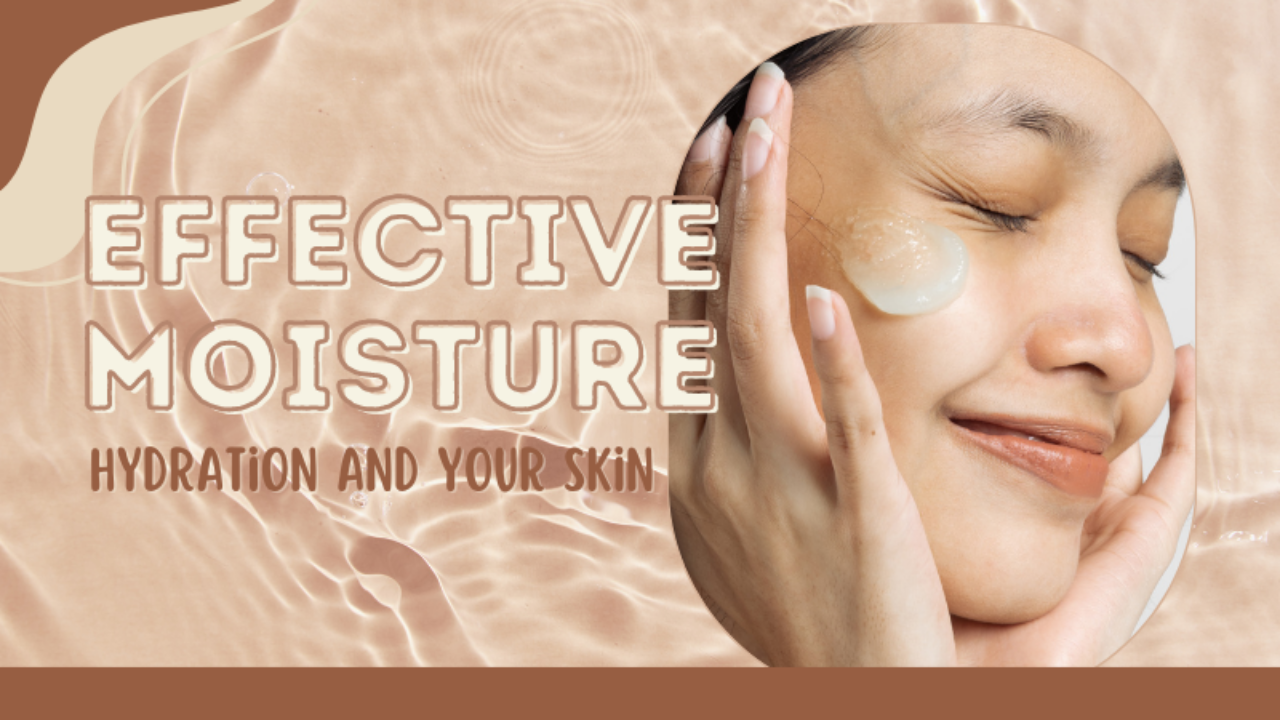Plump and Dewy
Aug 29, 2023
One of my favorite photos is of a small tin container found in an ancient Roman site in London - dating from over 2,000 years ago, the tin contains the remains of a cream, in which finger marks can still be seen! (source) Moisturizing is an ancient human practice - the oldest samples of face cream ever found date from almost 3,000 years ago in China, and were made of animal fat. Our ancestors also got dry, irritated skin, and wanted to look and feel better. We have more options these days, but the basics of moisturizing haven’t changed in 3,000 years.
Methods of Moisture
Moisturizers for skin fall into three types; emollients, humectants and occlusives. Emollients are what most of us think of as your basic skin cream. Emollient ingredients include many fats and oils, and gels such as colloidal oatmeal. They sit on the top layer of skin where they can soak into tiny cracks and plump the top layer of the epidermis. Humectants actually draw water from the air into the skin, great for extreme dryness; hyaluronic acid, aloe vera, glycerin and honey are all humectants. Finally, occlusives act as a seal on the surface of the skin, slowing down moisture loss and protecting the skin. Beeswax, silicone and dimethicone, lanolin and petroleum jelly are all occlusives. Many skin care products combine ingredients from some or all of the categories.
The other key to hydrated skin is hydration! Check out our recent post on the hows and whys of water and subclinical dehydration, which can have a dramatic effect on the look and feel of your skin.
Maximum Moisture
Your skin can look and feel dry even if you’re drinking enough water. Heating and air conditioning, air pollution, stress, illness and age can all affect our skin’s ability to retain moisture. Here’s some tips on keeping your skin happy and hydrated.
You need water to moisturize:
in addition to drinking enough water, apply moisturizers when your skin is damp. For your face, apply moisturizer on clean skin, after you’ve applied any toner, serum or mist. For your body, apply lotion or oil when you’ve just stepped out of the shower. An easy way to do this is with a spray bottle (careful not to make your bathtub slippery!)
Titrate to your skin type:
Experiment to find the right product for you, and don’t be afraid to switch up your products, especially as the weather or your lifestyle change. Too light and emollient based and your skin will feel dry and tight soon after you apply. Too rich and occlusive and you could get breakouts or irritation.
Don’t be afraid to keep it simple:
You can get as sophisticated as you like with ingredients (and price!) when it comes to skin care. Many moisturizers contain additional ingredients to address other concerns like aging, sun damage, breakouts or irritation. But you can give your skin a daily hydration boost by splashing water on your face and patting on a little jojoba or avocado oil. Layer on some sunscreen before you go out and you’re done.
Take a tour of moisturizers of our skin care collection!
If you’d like some help with the mysteries of moisturizers, or some personalized advice for your skin concerns, drop me a note at [email protected] or reply to this email.
|
|
||||||||||||
Get Personalized Health Guidance
Looking to improve your wellbeing? Reach out to schedule an appointment for tailored health advice and to start getting relief soon.
Book Now
